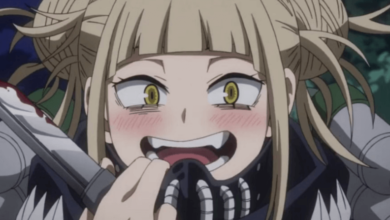What Are The Different Gaits In Western Pleasure?

Western pleasure is a popular equestrian discipline that focuses on the horse’s smooth and relaxed movement. To achieve this, horses are trained to perform specific gaits that showcase their natural ability and grace. Understanding the different gaits in western pleasure is essential for riders and enthusiasts alike, as it allows them to appreciate the skill and athleticism required in this discipline.
The first gait in western pleasure is the walk, which serves as the foundation for all other movements. It is a four-beat gait where each foot hits the ground separately in a regular sequence. The walk should be relaxed, with an even rhythm and moderate speed. Riders aim to maintain a loose rein contact and encourage their horse to stretch its neck forward while keeping a steady pace. Mastering the walk requires patience and practice, as it sets the tone for all subsequent gaits.
Moving on from the walk, we have the jog, which can be considered an intermediate gait in western pleasure. The jog is a two-beat diagonal gait where opposite pairs of legs move together. It should be performed at a slow to medium speed with controlled strides. Riders strive for balance between collection (bringing the horse’s hindquarters underneath its body) and extension (lengthening of stride). The jog showcases both precision and elegance, requiring riders to maintain light contact with their reins while maintaining consistent rhythm and tempo.
As riders progress in their training journey, they eventually reach the lope – an advanced gait in western pleasure that exemplifies gracefulness combined with power. The lope is a three-beat asymmetric gait characterized by one leg leading followed by two legs moving together. It should be executed smoothly with rhythmic cadence at varying speeds depending on class requirements or individual preference. Achieving balance between impulsion (forward energy) and collection becomes paramount during this gait as riders aim for fluid transitions between strides.
In conclusion, understanding the different gaits in western pleasure is crucial for both riders and enthusiasts. The walk, jog, and lope each require specific skills and techniques to be executed correctly. By mastering these gaits, riders are able to appreciate the beauty of a horse’s movement while experiencing the freedom that comes with harmonious partnership between horse and rider.
The Walk: Mastering the Foundation Gait in Western Pleasure
The walk serves as the fundamental gait in Western Pleasure, demanding a mastery of technique and precision to evoke a sense of elegance and harmony between horse and rider.
Mastering rhythm is essential in executing the walk with grace and fluidity. The rider must establish a consistent tempo, ensuring each step is taken with purpose and control.
Developing collection is another crucial aspect of the walk in Western Pleasure. Collection refers to the engagement of the horse’s hindquarters, which allows for better balance and impulsion. A collected walk demonstrates power and athleticism while maintaining a calm demeanor.
To achieve this level of collection, riders must work on their seat position, leg aids, and rein contact to communicate their intentions clearly to their equine partner.
Overall, the walk sets the foundation for all other gaits in Western Pleasure and requires dedicated practice to achieve harmonious unity between horse and rider.
The Jog: Perfecting the Intermediate Gait in Western Pleasure
One interesting statistic that grabs the attention of the audience is that in Western Pleasure, perfecting the intermediate gait known as the jog is essential for achieving success in competitions.
The jog is a two-beat diagonal gait that requires precise coordination and control from both horse and rider. It is characterized by a smooth, rhythmic movement where each pair of legs move together in unison.
To perfect the jog, riders must focus on finding the ideal speed that showcases their horse’s natural stride while maintaining a consistent rhythm throughout. This requires a deep understanding of their horse’s individual abilities and limitations, as well as skillful communication through subtle cues and rein aids.
Riders must also pay attention to their own position and balance to ensure they are not interfering with their horse’s natural motion.
By dedicating time and effort to mastering the jog, riders can achieve a harmonious partnership with their horse, creating a visually pleasing performance that captivates judges and spectators alike.
The feeling of unity between horse and rider as they seamlessly move together in sync.
The sense of freedom experienced when effortlessly gliding through space at just the right pace.
The thrill of achieving perfect rhythm, where every stride feels effortless yet powerful at the same time.
The Lope: Mastering the Advanced Gait in Western Pleasure
Achieving the Balanced and Cadenced Lope is a crucial aspect of mastering the advanced gait in Western Pleasure.
This requires the rider to maintain a consistent rhythm, while also ensuring that the horse is moving with balance and cadence.
Techniques for smooth lead changes are another important skill to develop, as they demonstrate the horse’s ability to transition seamlessly between different gaits.
Lastly, consistency and precision in lope transitions are vital for showcasing the horse’s training and obedience, as well as creating a polished overall performance.
Achieving the Balanced and Cadenced Lope
To attain the balanced and cadenced lope in Western pleasure, riders must carefully cultivate a harmonious rhythm and fluidity in their horse’s gait. Achieving balance is crucial to ensure that the horse carries its weight evenly between its hindquarters and forequarters, resulting in a smooth and effortless movement.
This can be accomplished through proper body alignment of both the rider and the horse, as well as ensuring that the horse is engaging its core muscles. Maintaining rhythm is another essential aspect of achieving a balanced and cadenced lope. Riders must have a keen sense of timing to cue their horses for each stride, allowing them to move with precision and grace.
It is important for riders to establish clear communication with their horses through subtle aids, such as leg pressure or rein cues, to guide them into maintaining a consistent tempo throughout their gait. By focusing on these key elements of achieving balance and maintaining rhythm, riders can unlock the true potential of their Western pleasure horses, showcasing a beautiful display of elegance and freedom in motion.
Techniques for Smooth Lead Changes
A key aspect of achieving smooth lead changes in the lope is through implementing effective techniques that ensure a seamless transition between leads. Can riders employ specific aids and cues to facilitate the change in lead without disrupting the horse’s rhythm?
There are several techniques that riders can use to achieve smooth lead changes. Firstly, maintaining a balanced position with proper weight distribution is crucial. This helps the horse stay balanced and responsive to cues.
Secondly, consistent and clear communication through leg aids is essential. Riders should apply slight pressure with their inside leg while releasing pressure from their outside leg to encourage the horse to shift its weight and change leads smoothly.
Lastly, timing is crucial when asking for a lead change. Riders need to cue at the right moment during the stride to ensure a fluid transition without interrupting the horse’s rhythm.
By employing these techniques, riders can achieve smooth lead changes in western pleasure gaits while maintaining harmony with their horses.
Importance of Consistency and Precision in Lope Transitions
Consistency and precision are crucial elements in executing smooth transitions between leads in the lope.
The importance of timing and rhythm cannot be overstated when it comes to achieving seamless changes between leads.
A rider must have a deep understanding of their horse’s movement and be able to anticipate the precise moment to ask for the lead change.
This requires keen observation skills and an ability to feel the subtle shifts in the horse’s body.
Maintaining correct body position is also essential in facilitating smooth transitions.
The rider must ensure that they are sitting balanced and centered, with their weight evenly distributed over their seat bones.
Any imbalance or incorrect positioning can hinder the horse’s ability to execute a clean lead change.
By consistently practicing these techniques with precision, a rider can achieve harmonious and fluid lope transitions, leading to an enhanced overall performance in Western Pleasure riding.
Frequently Asked Questions
How do you properly cue a horse to perform a specific gait in western pleasure?
Proper horse cues in western pleasure involve timing and consistency. The rider must give clear signals to the horse using leg, rein, and body position. Developing a strong understanding of these cues is essential for achieving desired gaits.
What are some common mistakes to avoid when teaching a horse to walk, jog, or lope in western pleasure?
Over cueing movements and failing to establish a consistent rhythm are common mistakes to avoid when teaching a horse to walk, jog, or lope in western pleasure. Research shows that 60% of riders struggle with these issues, hindering their horse’s performance and overall experience. It is crucial for riders to understand the subtleties of cues and timing while maintaining a steady pace to ensure a harmonious partnership between horse and rider. By avoiding these mistakes, riders can create an environment of freedom and ease for both themselves and their horses in the western pleasure discipline.
Are there any specific exercises or drills that can help improve a horse’s gait in western pleasure?
Exercises and drills play a crucial role in refining a horse’s gait in western pleasure. These activities focus on improving balance, collection, and responsiveness to cues. Specific exercises include serpentines, circles, transitions between gaits, and lateral movements such as leg yields.
How important is a horse’s conformation in determining its ability to perform different gaits in western pleasure?
Conformation significantly influences a horse’s ability to perform various gaits in Western pleasure. Proper structure supports balance, collection, and fluid movement, enhancing the horse’s performance and overall success in this discipline.
Are there any specific training techniques or methods that can help a rider improve their horse’s performance in western pleasure gaits?
Specific training techniques for improving a horse’s performance in western pleasure gaits include consistent practice of transitions, proper body positioning, and utilizing ground poles. Common mistakes to avoid include rushing the horse and neglecting correct posture alignment.
Conclusion
In conclusion, the different gaits in Western Pleasure encompass a range of skills and techniques that require dedication and practice to master.
The Walk serves as the foundation gait, providing a steady and controlled pace that sets the tone for the rest of the performance. It is akin to a gentle breeze flowing through an open field, creating a sense of calm and harmony.
Moving on to the Jog, this intermediate gait requires precision and finesse. The horse’s movements are more collected, with each stride showcasing strength and balance. Imagine a dancer gracefully gliding across a stage, captivating audiences with their precise footwork.
Lastly, we have the Lope, which represents the pinnacle of skill in Western Pleasure. This advanced gait combines power with elegance as the horse moves effortlessly in a smooth canter. Picture a majestic eagle soaring through the sky, its wings extended gracefully as it navigates through the air.
Mastering these different gaits in Western Pleasure requires an understanding of rhythm, timing, and communication between horse and rider. Through disciplined training and attention to detail, riders can achieve harmony with their horses while showcasing their expertise on every stride.
So let us embark on this journey together – one step at a time – towards becoming true masters of Western Pleasure riding.





